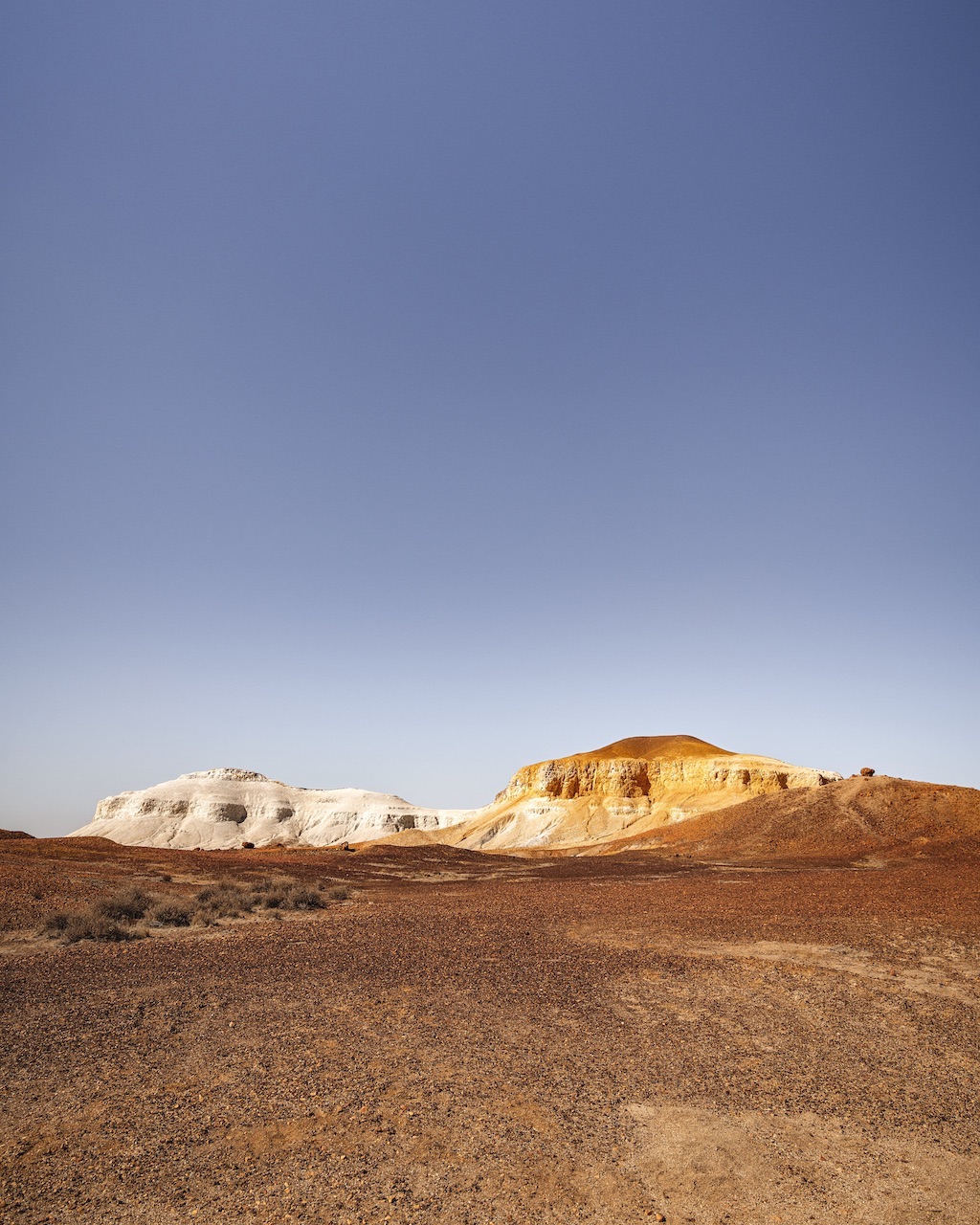
“It’s not just a question of brute distance – though goodness knows there is plenty enough of that – but of the incredible emptiness that lies within all that distance” – Bill Bryson, In a Sunburned Country
Pondering British-American writer Bill Bryson’s pronouncement on Australia, I question why I am getting on a train just to sit by the window and watch a world of nothingness slide by. Is it to find myself or to lose myself? To revel in the quiet moments, surely guaranteed on a three-night cross-country trip through Australia’s Red Centre? Standing on the platform in Darwin, squinting through the bright light of the morning sun, my skin prickling from the heat and midges, I stare at my home for the next four days. Set against the clear blue sky, a line of silver carriages stretching almost a kilometre down the track.
Named after the Afghan cameleers who were vital in the development and exploration of the Australian outback from the 1860s to the early 1930s, The Ghan is an epic train journey that spans close to 3,000 kilometres across the continent from Darwin to Adelaide. Although celebrating its 90th anniversary this year, The Ghan was a long work in progress – its last leg, the 1,420km route from Alice Springs to Darwin, was only finished as recently as 2004. As well as cementing its place in the record books as the world’s longest north-to-south railway journey, the line’s completion also helped elevate The Ghan into a select group of truly great train rides.
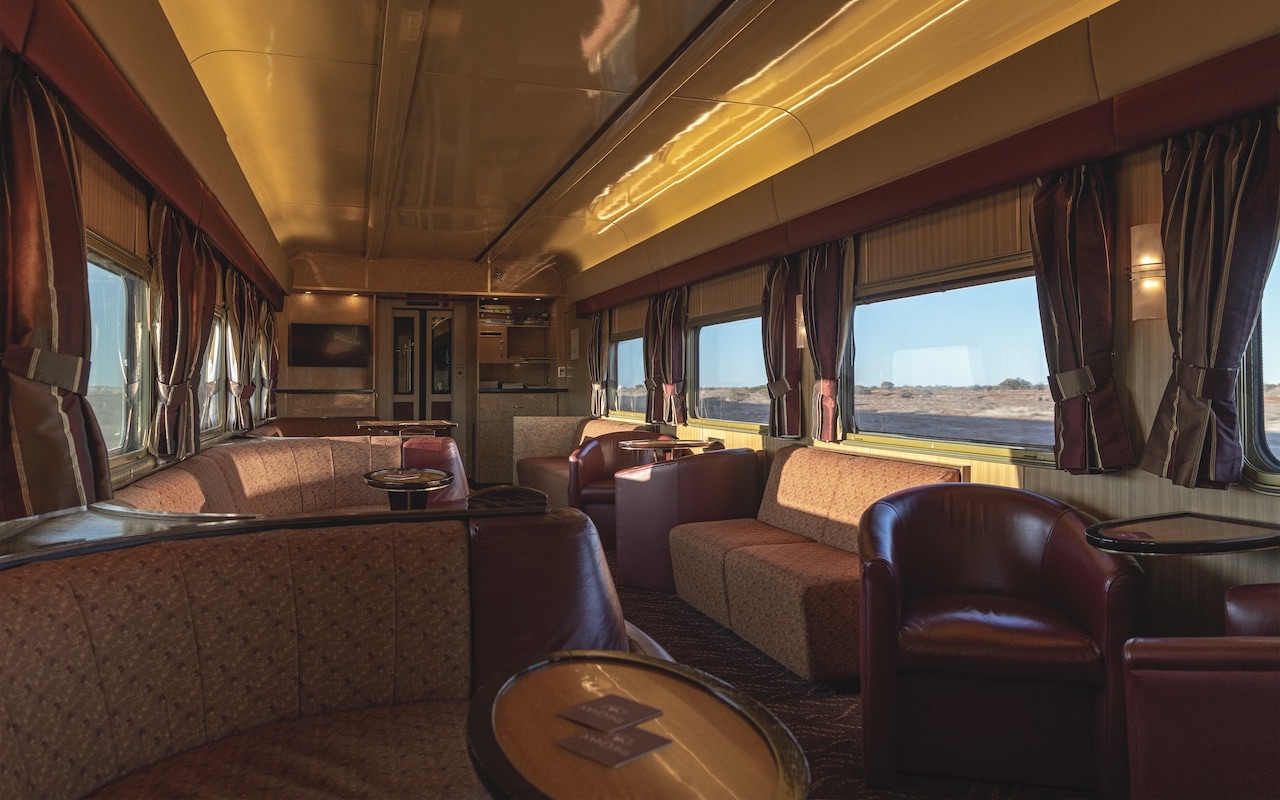
Inside, the train looks set to match those expectations. Richly carpeted sleeper cabins lead off into wood-panelled hallways with panoramic windows. Each carriage is outfitted with a self-service coffee and drink station, while the lounge and dining cars are inviting spots to sip on a glass of wine alongside your fellow guests.
Despite the luxurious trappings, The Ghan is decidedly unstuffy. The staff is young and amiable, making you feel like part of the family. Sandy blond, with a cheeky sense of humour, Sam Whaley looks far from what one might expect of a train manager. He’s just 33, but has been working on board for 13 years. “I never had any hospitality experience before. I just applied on a whim and I got an interview,” he shares. “Supposedly I got the job because they couldn’t shut me up!”
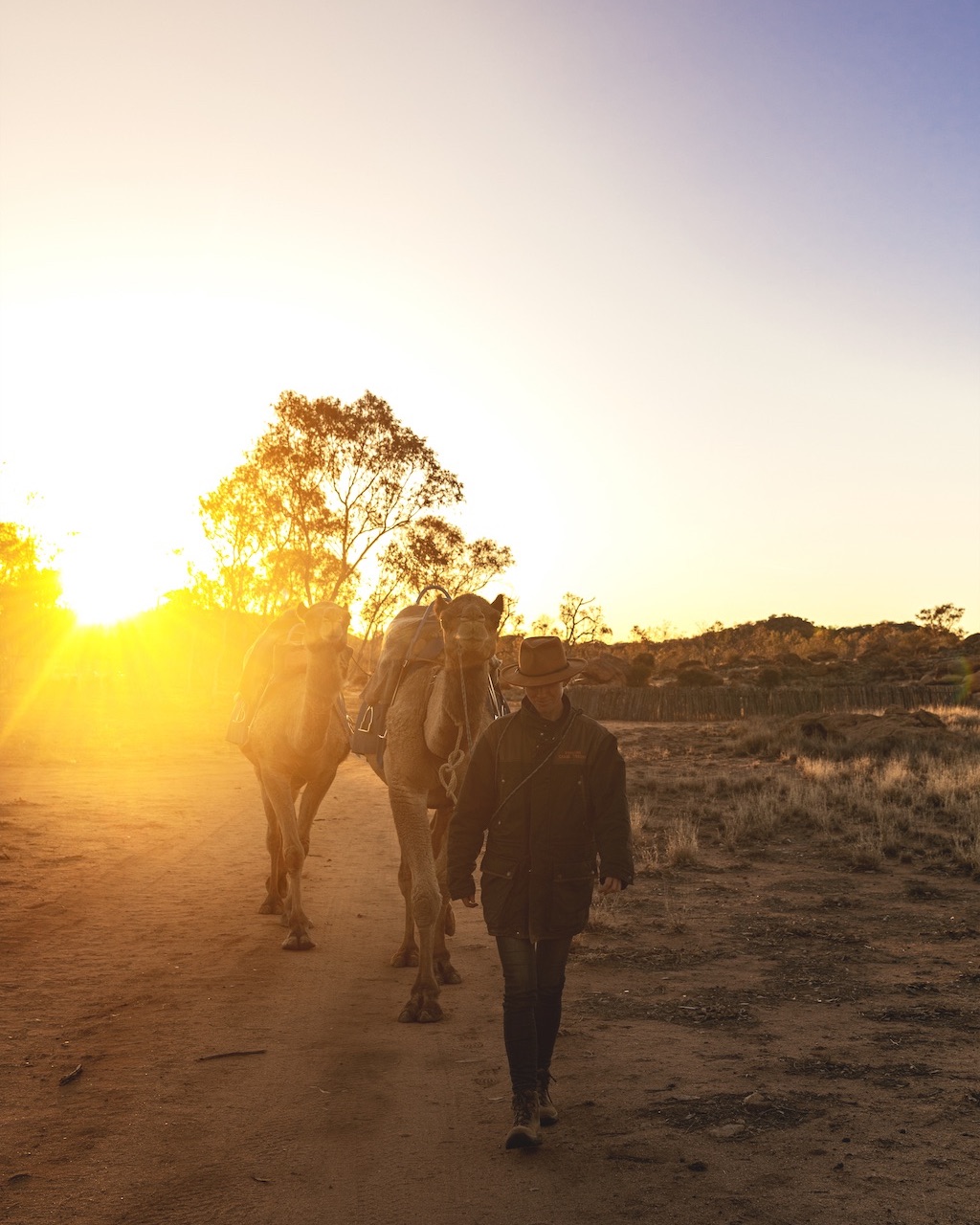
When asked what he loves most about working on the train, Whaley says, “There’s different scenery every day – each sunrise and sunset are going to be different. But it’s really the guests. It’s their expressions and experiences, when you see them see it for the first time.”
At each stop there are several full-day, off-train excursions to choose from. And the few moments that you do find yourself relaxing on board are animated by vibrant conversations with fellow travellers. While the passenger demographic might be older – retirees and bucket-listers make for the bulk of the guests – that certainly doesn’t mean they are any less active. At one point, over dinner, I remark to my dining companion, Claire, a kind and beautiful septuagenarian from Auckland, that it would be nice to have some downtime to read a book. She swiftly retorts, “I can read a book any day! I wouldn’t miss a second of adventure.”
And there’s plenty of that. From Indigenous paintings that adorn the rock face of Nitmiluk Gorge, to the ghost gum trees that surround the historic frontier town of Alice Springs, and the wide, empty spaces of the South Australian desert, each stop presents a different landscape and a fresh insight into the rich local culture and pioneering frontier spirit that makes up this journey through the very heart of Australia.
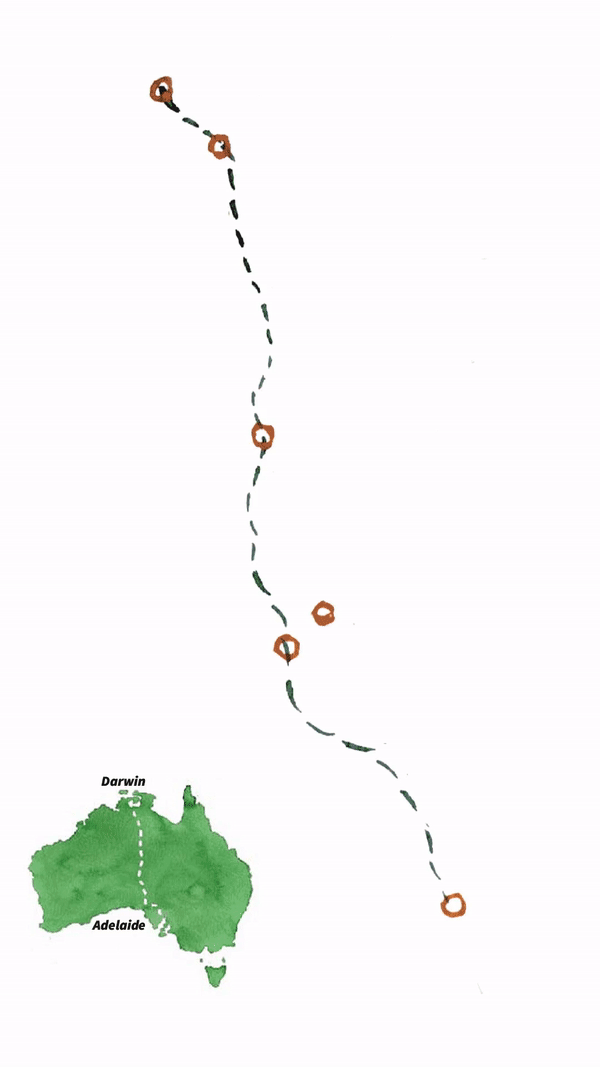
Nitmiluk Gorge, Katherine
Day 1, 3pm
“The first time you see a croc is when their jaws are about to crunch on you,” our guide Jamie Brookes nonchalantly states. Four hours into our train journey, we are at Nitmiluk National Park, and Brookes is leading us on a boat ride through the gorge. “There is no screaming,” he adds. “You just see a swell of water, then they’re gone.”
Danger and beauty seem inexorably interlinked in the Australian outback. As Brookes explains, the invitingly blue, deceivingly placid waters of Nitmiluk Gorge are actually teeming with both freshwater and saltwater crocs, curtailing any desire I have to go for a swim. Sandstone escarpments tower all around us, dotted with greenery and set against a clear sky. The jagged rock surfaces resemble carved faces – spirits encased in earth and stone. This is very ancient land – 1.65 billion years old to be exact.
“The Jawoyn and Dagoman people believe that the spirits of the land told the people how to survive,” Brookes explains, referencing two Indigenous Australian groups, which he is part of, by marriage and birth respectively. “You had to continuously appease the spirits of the land and if you didn’t take care of it, you died.”
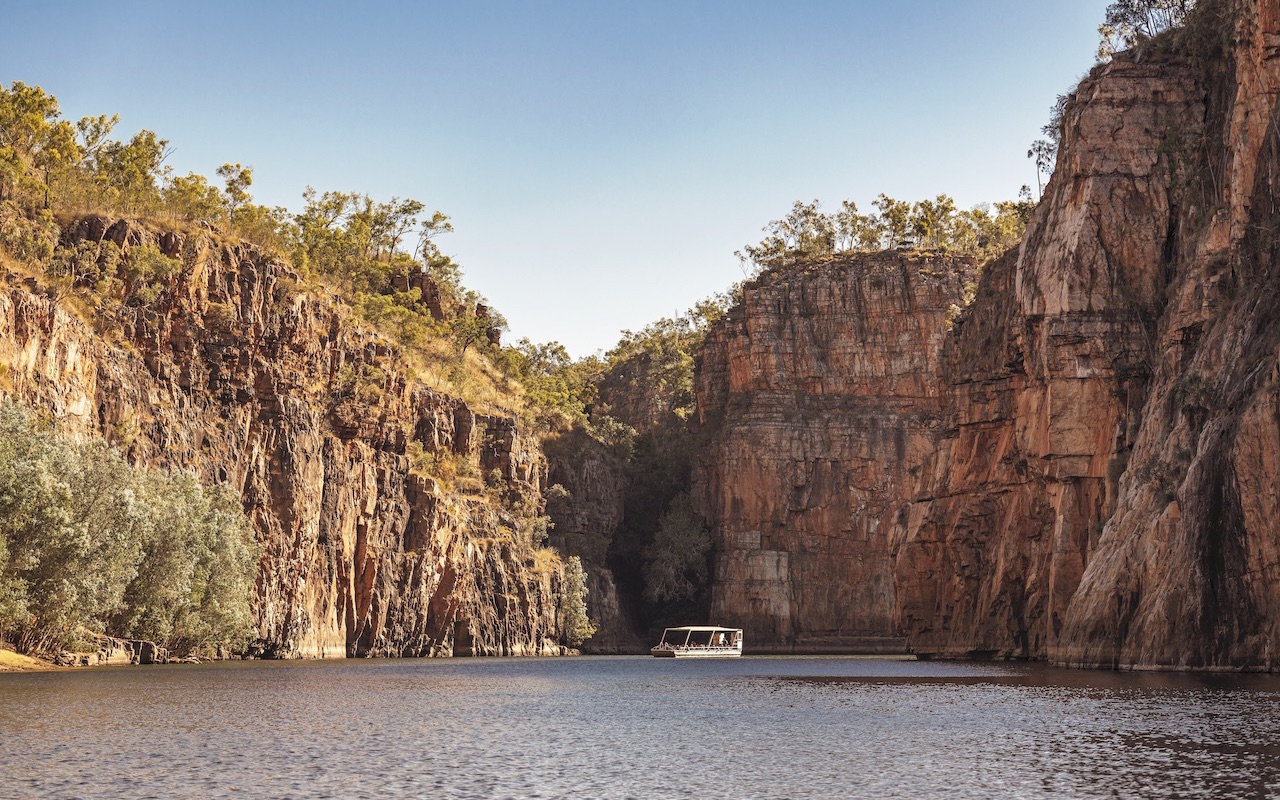
The gorge has the feeling of a natural temple, flat rock beds serving as altars upon which crocodiles and deadly water snakes bask in the sun. Aboriginal rock art, some of which dates back 40,000 years, adorns parts of the cliffs. Our boat-load of passengers drops into hushed tones, in what seems like innate reverence for the sublime nature and history around us.
This feeling of awe at the sheer age of the landscape is one I will encounter often on this trip. Australia is a truly ancient land, much of it preserved in its dryness. Sunburned, perhaps, as Bryson would describe it, but far from empty.
Simpsons Gap, Alice Springs
Day 2, 9am
For a town with a name like Alice Springs, the place is decidedly dry. Just 18km west of the settlement, at Tjoritja/West MacDonnell National Park, you’ll find a barren, semi-arid desert environment. The parched red earth is scattered with signs of fire and dotted with eerie-looking white ghost gum trees; their thin pale trunks and branches giving them the look of lost souls standing stark against the desolate surroundings.
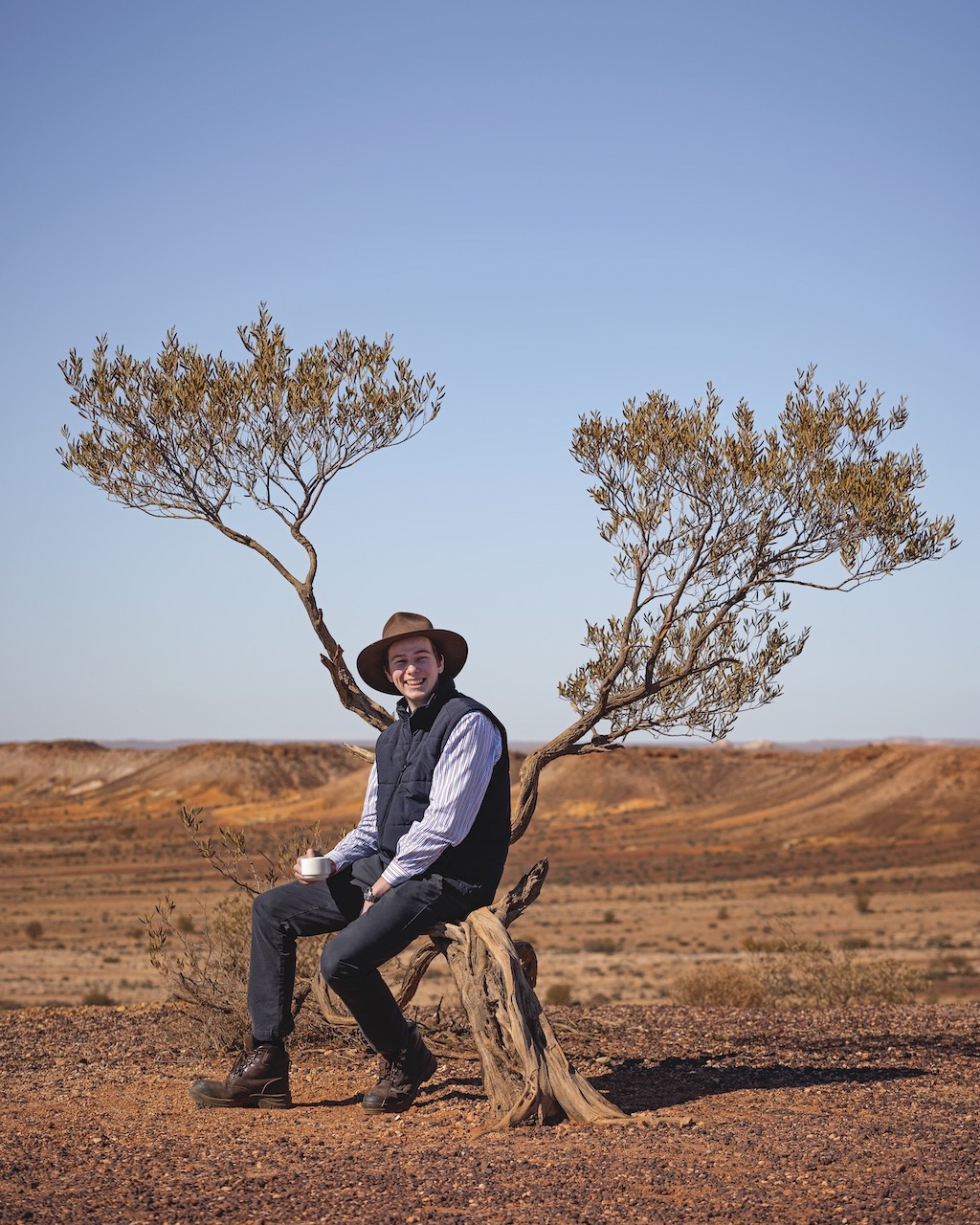
“The Indigenous population sees this land as their supermarket, hardware store and chemist,” Jo Lyons shares. The Alice Springs local is our guide for the day. Pointing to the tea trees and eucalypts around us, she tells of how the Indigenous people would set the land on fire when they were done extracting what they needed. Rather than destroying what was left, it actually helped breathe new life into the bush, with some seeds needing the heat to open.
As we stomp through the bush, making as much noise as possible to ensure that no poisonous snakes get in our way, I am reminded that in this punishing terrain, you have to listen to the cues and tune in to the environment.
“That’s what the Indigenous do. They stop and listen to the wind, they listen to the land,” Lyons continues at the top of windswept Cassia Hill. “We don’t own the land. The land owns us.”
Telegraph Station, Alice Springs
Day 2, 5pm
In the evening, we are bussed to an outdoor barbecue at the historic Telegraph Station of Alice Springs. Established in 1872 to relay messages between Darwin and Adelaide, the outpost, made up of several bungalows, is the original site of the first European settlement in central Australia.
Lit by hurricane lamps and campfires, passengers gather in groups to break bread. Some go for camel rides, while a local band from Alice Springs plays classic rock tunes accompanied at one point by a homemade PVC didgeridoo.
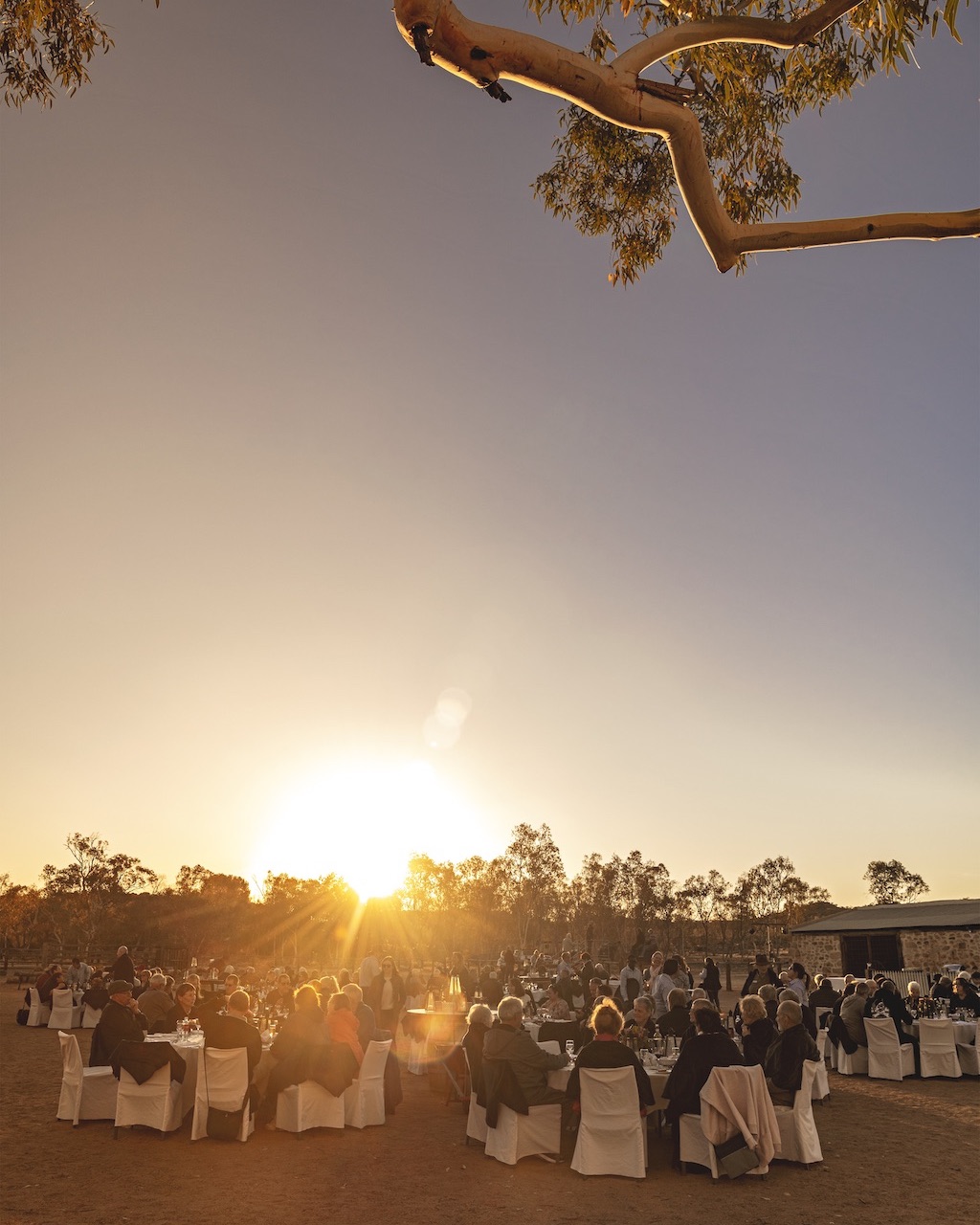
I find myself sitting next to 10-year-old KJ, the youngest passenger on the train, who’s travelling with his dad on an annual father-and-son holiday. Bright-eyed and soft-spoken, but far from shy, he totes around a little black Moleskine notebook, on which he scribbles his impressions and sketches. “He’s way more old-fashioned than I am!” Mark, his father, says, explaining that it was KJ’s idea to come on this train. Dressed in what I’m told is his signature poncho, KJ shares why he chose The Ghan: “I was reading a book by Bill Bryson called In a Sunburned Country and I really wanted to experience the outback that he did.”
Philosopher Alain de Botton wrote, “The pleasure we derive from journeys is perhaps dependent more on the mindset with which we travel than on the destination we travel to.” As such, a glimpse of the world through the mind of a co-passenger like KJ is a true gift.
Coober Pedy, Manguri
Day 3, 9am
Mornings on the train are by far the most peaceful time of day. At night, I sleep with the shades rolled up so that I can gently wake to the sun rising across the moving terrain. This morning is particularly special – as we roll into Manguri station, the red-earthed desert horizon lends a stunning backdrop for the early golden light.
Over breakfast, I can barely pay attention to the conversations of my fellow travellers as I stare out the window in awe. This is the Australia that I imagined: wild kangaroos bounding across vast plains dotted with sage-coloured shrubs, flocks of pink-chested galahs streaking across the azure sky. The train stops to give us the chance to visit the famous Breakaways situated on the legendary Stuart Highway. Once covered by an inland sea, the copper-hued, flat-topped sandstone mesas now form an impressive, almost otherworldly landscape. Picnicking on top of one gives us time to enjoy the vast horizon and breathtaking vistas.
From here, it’s on to the opal mining town of Coober Pedy. Founded back in 1915 and with a current-day population of 3,000, drawn from 45 different nationalities, it remains committed to supplying most of the planet’s gem-quality opals. Some 80 per cent of the world’s opals comes from South Australia, the majority of which are found beneath this town. Rusty junkyards, dusty roads and “dugouts” – homes literally carved out of the ground – all give Coober Pedy a ghost-town allure. It’s not surprising to learn of its starring role in dystopian movies such as Mad Max 3 and The Chronicles of Riddick: Pitch Black. Due to high temperatures of over 40°C during the summer months and the harsh desert climate, almost all the action happens underground, including a delicious lunch which is prepared for us in an old opal mine.
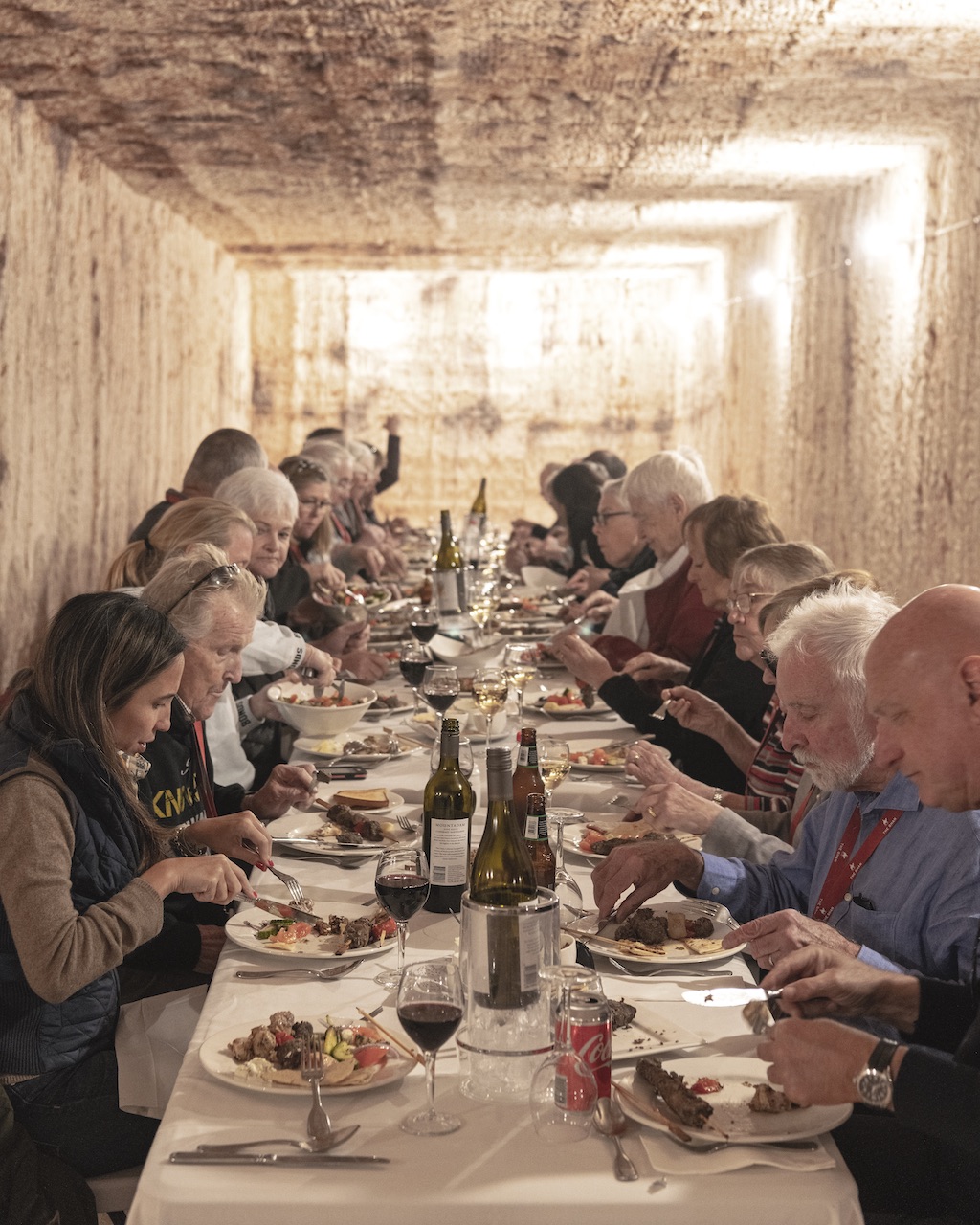
Far from dark and dank, the white, carved stone shafts give the space a soft uplit glow and create a welcoming setting for the long, convivial dining tables adorned with Mediterranean kebabs and mezze platters, which we feast on while sheltering from the afternoon sun.
Manguri
Day 3, 5pm
To celebrate our last night, the train staff lay on a beautiful cocktail spread, complete with views over the desert. Night falls quickly, and the cold overwhelms like a heavy blanket, leaving us hushed and huddled, friendships further forged by the bonfire.
Most people retire to their beds, but I linger, hoping for a glimpse of the starry sky. Instead, I find myself moonstruck. The waxing crescent moon hovers above us, its thin outline making a perfectly round circle with just a smiling sliver at the bottom. I watch intently, only to realise that the moon is in fact setting, not rising.
“It’s because it’s winter in the Southern Hemisphere,” booms a deep voice from behind us. One of the train technicians begins to explain the phenomenon as we continue to stare in astonishment as the moon slowly follows the same path the sun has taken beyond the horizon.
Left behind is the sky in all its celestial glory, a billion stars over a velvet blanket of inky space, the Milky Way vivid and clear like a smattering of magic sparkles. For a second, I have this out of body experience: this incredible realisation of my exact sense of place, the sensation of feeling both small and infinite at the same time.
Adelaide
Day 4, 10am
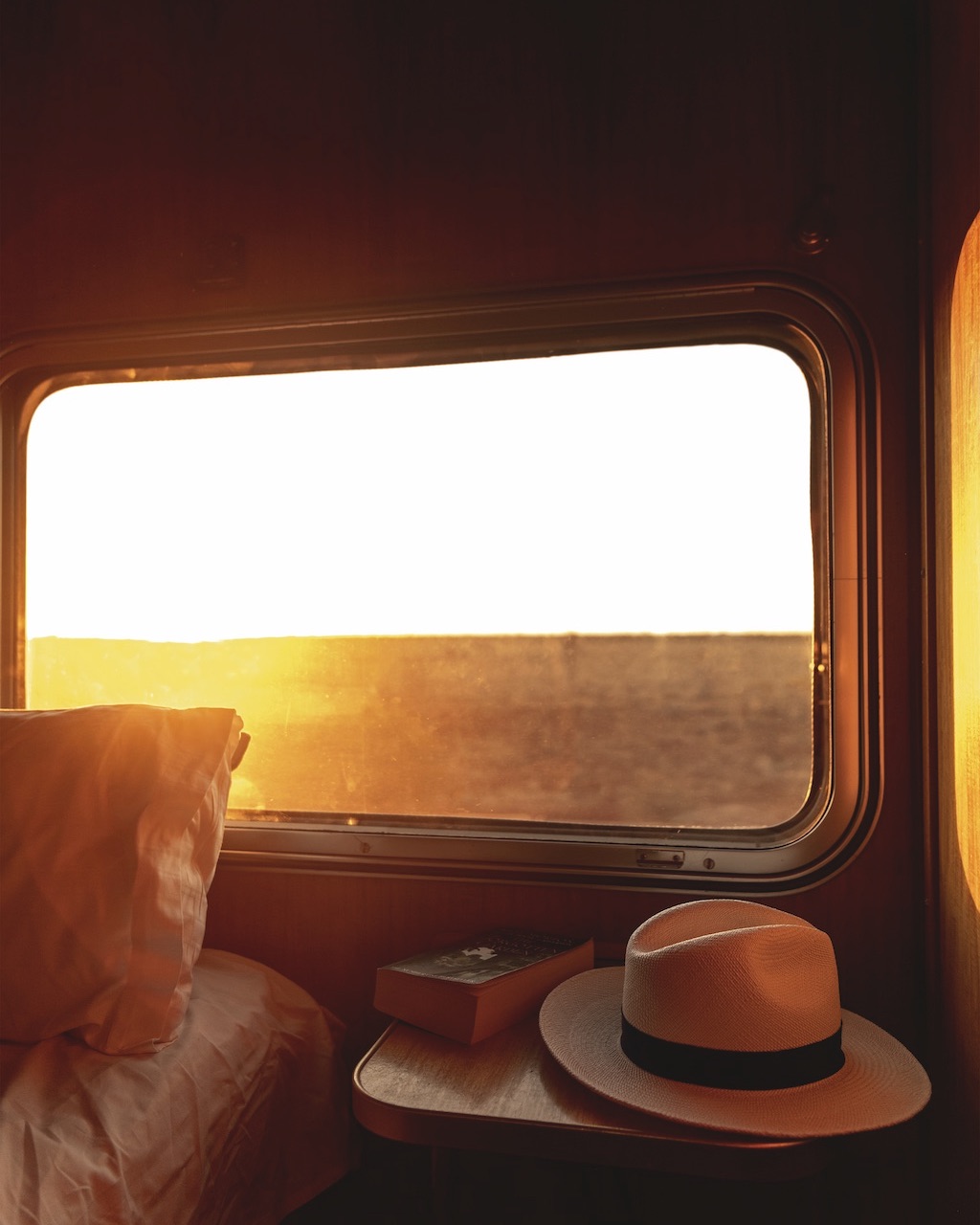
As we pull into a cold and misty Adelaide, the weather reflects the mood of the people gathered in the lounge cars – sad and subdued that the journey is over. Reflecting on the trip, I realise now that where The Ghan starts and where it ends isn’t the point of the journey. It is, at its heart, an impressionistic voyage through history and culture, dotted with memories and personal encounters – at times touching and spiritual, at others downright funny and fun.
It is tangible proof that Bill Bryson was wrong. If there’s anything my time on The Ghan taught me, it’s that the centre of Australia is not a vast emptiness. Rather, it is full of communities that are shaped by their unique geography and filled with people who have numerous stories to share.
Indeed, riding on The Ghan is not just about the places you see, but how they make you feel. It is about those exchanges and connections you make with the land, the train and the people you meet along the way – be it the warm and affable staff on the train or the colourful locals you encounter at every stop. It’s an experience that leaves a little bit of Australia in your heart.
Illustration by Hannah Clark
Animation by Syahirah Mazlan
Singapore Airlines flies daily to Adelaide and daily to Darwin, via regional airline SilkAir. To book a flight, visit singaporeair.com
SEE ALSO: An insider’s guide to Adelaide, Australia
This article was originally published in the October 2019 issue of SilverKris magazine
The post From Darwin to Adelaide: The epic three-night rail journey on The Ghan appeared first on SilverKris.
from SilverKris
Acheter CBD Isolat en France
ReplyDeleteAcheter CBD Isolat en France est une extraction pure et de grande qualité, présentant un taux de CBD à 99,8%. Fabriquée à partir de cristaux de CBD, cette fine poudre blanche a l’avantage de vous apporter tous les bienfaits du cannabidiol dans une extraction sans goût et neutre olfactivement. Acheter CBD Isolat en France (ou cannabidiol), est l’un des nombreux cannabinoïdes présents dans la plante de chanvre. Il est ensuite isolé des autres cannabinoïdes, terpènes et autres composants du cannabis afin d’être le plus concentré possible. Acheter CBD Isolat en France se présente sous la forme d’une fine poudre blanche, obtenue à partir de cristaux de CBD. Séparé des terpènes qui confèrent à l’extraction les arômes caractéristiques du chanvre, l’Isolate est neutre aussi bien olfactivement que gustativement. Acheter CBD Isolat en France